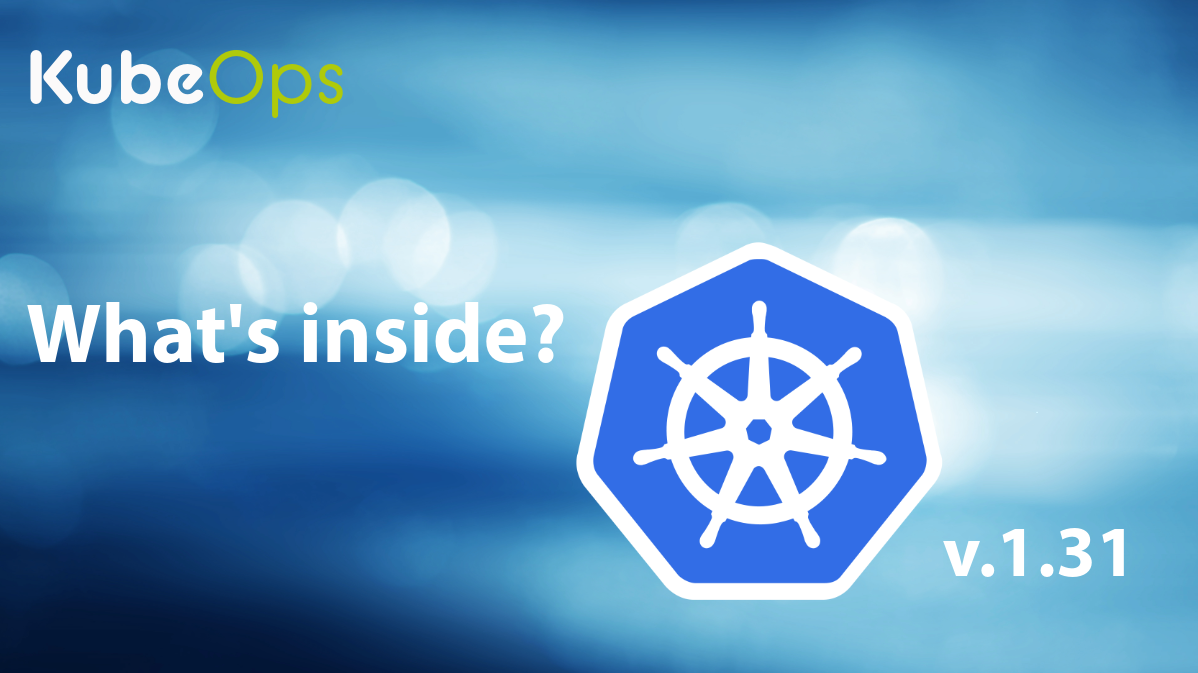Blogs
What's inside Kubernetes v.1.31?

Kubernetes 1.31 is here, and with it comes a range of updates that continue to push the platform forward in terms of security, networking, and overall usability. Whether you're a developer or an administrator, these enhancements offer something valuable that can help streamline operations and improve the efficiency of your Kubernetes clusters. Let’s dive into what makes this release noteworthy.
Strengthening Security: More Control, Less Risk
Security is always a top priority in Kubernetes, and this release takes it a step further with some crucial improvements:
Improved Management of Service Account Tokens
Service account tokens are vital for pods to authenticate with the Kubernetes API server. However, their management has historically been a challenge, especially with tokens that linger longer than needed. In this release, Kubernetes introduces enhancements that make tokens more secure and easier to manage. Automatic rotation ensures that tokens are refreshed periodically, reducing the risk of compromised tokens being exploited. Additionally, the improved revocation mechanisms mean that tokens can be quickly invalidated when they are no longer needed, providing tighter security controls.
Tighter Controls on Anonymous Access
In previous Kubernetes versions, the API allowed a broad scope of anonymous access, which could potentially expose clusters to unauthorized activities. Kubernetes 1.31 changes this by limiting anonymous authentication to only specific, pre-configured endpoints. This adjustment helps reduce the attack surface and ensures that only the intended parts of your cluster are accessible without credentials.
AppArmor Integration for Enhanced Security
AppArmor, a security module that enforces security policies at the kernel level, is now fully integrated into Kubernetes. This means you can define and apply AppArmor profiles to your pods, providing an additional layer of protection against unauthorized actions. This integration is particularly beneficial for environments where security is paramount, as it allows for more granular control over what containers can and cannot do.
Networking Enhancements: Greater Reliability and Flexibility
Networking is a fundamental aspect of Kubernetes, and the latest release introduces features that make network management more reliable and adaptable.
More Reliable Ingress Connectivity
One of the highlights of this release is the improvement in how Kubernetes handles ingress connectivity, particularly on nodes that are in the process of being terminated or have unhealthy Kube-proxies. These improvements help ensure that your services remain available and that connections are handled more gracefully, even in less-than-ideal circumstances.
Support for Multiple Service CIDRs
As Kubernetes clusters grow, managing IP address allocation can become a challenge. Kubernetes 1.31 addresses this by introducing support for multiple Service CIDRs. This feature allows administrators to dynamically allocate IPs from multiple CIDRs, providing greater flexibility and scalability. Whether you’re running a small cluster or a massive, multi-tenant environment, this update makes it easier to manage your network infrastructure efficiently.
Developer and Administrator Tools: Making Kubernetes Easier to Use
Kubernetes is as much about ease of use as it is about power, and the latest updates to the CLI and API reflect this balance.
WebSockets in kubectl
For those who frequently interact with Kubernetes through kubectl, the transition from the outdated SPDY protocol to WebSockets will be a welcome change. This shift not only modernizes the underlying technology but also provides a more stable and efficient way to handle streaming operations, making day-to-day management tasks smoother and more reliable.
Dynamic Pod Resource Management
Resource management is key to running efficient Kubernetes clusters, and Kubernetes 1.31 makes it easier than ever to adjust pod resources on the fly. With the ability to update pod resource requests and limits without restarting the pod, administrators can respond to changing workloads more quickly and with less disruption. This is particularly useful in environments with variable demands, where flexibility is crucial.
Cleaning House: Deprecations and Removals
As Kubernetes continues to evolve, it’s important to streamline the platform to ensure it remains maintainable and efficient. Kubernetes 1.31 includes several deprecations that reflect this ongoing effort.
Removal of In-Tree Cloud Providers
In its quest to become a truly vendor-neutral platform, Kubernetes has taken the significant step of removing in-tree cloud provider code. This change simplifies the codebase and encourages the use of external cloud provider integrations, making Kubernetes more modular and easier to manage across different environments. This move not only aligns with Kubernetes’ open-source philosophy but also reduces the risk of vendor-specific issues creeping into the core platform.
Final Thoughts: Why Kubernetes 1.31 Matters
Kubernetes 1.31 isn’t just another incremental update—it’s a reflection of the platform’s ongoing commitment to security, flexibility, and usability. Whether you’re managing a small development cluster or a large production environment, the enhancements in this release offer tangible benefits that can help you get the most out of your Kubernetes deployments.
By focusing on security improvements, more reliable networking, and a better user experience, Kubernetes 1.31 ensures that the platform remains at the cutting edge of container orchestration. As always, staying current with the latest version is the best way to ensure that your Kubernetes clusters are secure, efficient, and ready to handle whatever comes next.

